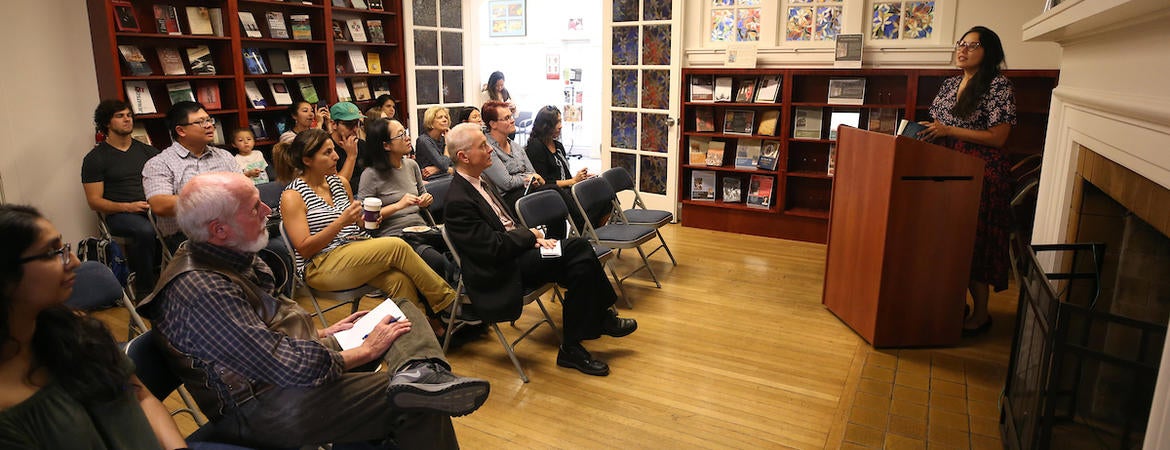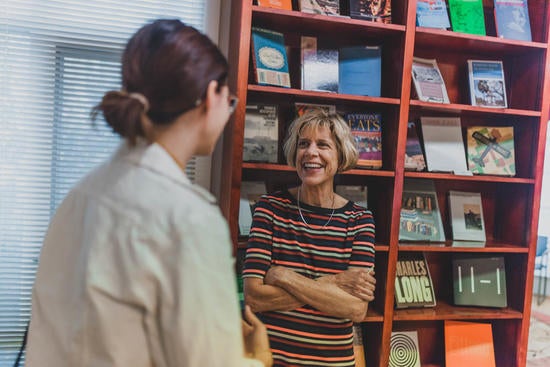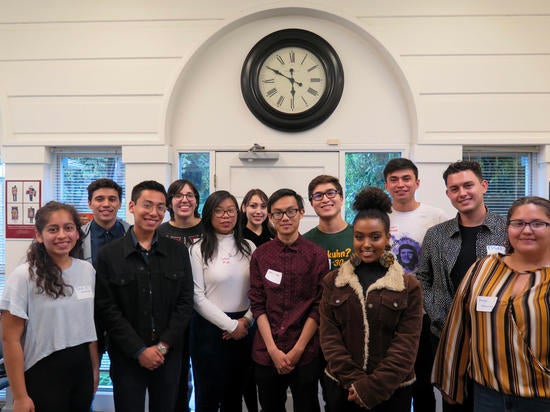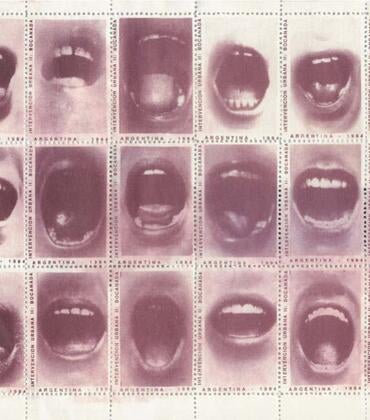
The sign on the front door bears a simple message: “There are scholars working here.”
And should you cross the threshold into the Center for Ideas and Society at the University of California, Riverside, you’ll find the scholars aren’t in short supply.
You might meet David Biggs, an environmental historian and associate professor in UC Riverside’s history department. Biggs studies militarized landscapes, places that have been transformed across generations by military activity and war. Until now, much of his research has focused on Vietnam, where centuries of conflict have left indelible imprints and birthed complicated environmental and social legacies.
With support from the center, Biggs is expanding the scope of his research to go beyond Vietnam and incorporate shorelines that saw midcentury military activity throughout the Asia-Pacific region, including ones in California, Guam, the Philippines, Okinawa, and Hawaii.
“What I’m trying to do is write a kind of Trans-Pacific history of the 1950s and ’60s, looking at experiences among native Hawaiians, Vietnamese, Okinawans, and others to find out what and how much they share in common,” Biggs said of the project.
Over the next year, he’ll comb U.S. military records in national and international archives to tell the stories of ordinary people — scientists, troops, families, refugees, and laborers — and the communities they inhabited during the region’s military colonization.
Biggs is conducting the research as a recipient of one of five inaugural Mellon Humanities Fellowships distributed by the center. The fellowships release their recipients from teaching for one academic year and provide stipends for research. They're funded by the Andrew W. Mellon Foundation, which in spring 2018 awarded $1 million to the center — the largest grant it has ever received.
“Because of the Mellon award, I’m able to devote full time to doing research and visiting sites,” Biggs said. “And even beyond that, UCR’s Mellon fellows have organized more group activities among the other scholars and people in residence at the center — one example is what we call ‘works-in-progress meetings,’ which allow us to share our work with a smaller, close-knit community and get really great feedback.
“What makes these meetings special is that you’re not just sharing with the same one or two collaborators but with people from other disciplines,” Biggs added. “The cross-fertilization that happens as a result is so important.”
Disciplines in dialogue
Since the center was founded 30 years ago, its mission of bridging gaps to forge new interdisciplinary partnerships has endured. In the process, it has become the beating heart of the university’s arts and humanities programs, offering a space for faculty, students, and the general public to convene, swap ideas, and learn from each other.
UCR’s Center for Ideas and Society was established in 1989 and is now one of 10 campus humanities centers in the UC system. Together, the 10 centers and the UC Humanities Research Institute, founded by then-UC President David Gardner in 1987 as part of UC’s systemwide investment in humanities research, comprise the UC Humanities Network.
In 2013, the center relocated to its current home inside historic College Building South, a converted house that was built in the early 1900s for the director of the Citrus Experiment Station.
Georgia Warnke, the center’s third director after Bernd Magnus and Emory Elliott, said the move was integral to the center’s development. Many scholars keep second offices at the center, coming together to work around the communal table in the conference room, and regular events welcome both members of the campus community and the general public.
“The goal is to be a resource not only for the campus but for the community,” said Warnke, who is also a distinguished professor in UCR’s political science department. “Our programming is almost always free and open to the public — very rarely have we charged for anything.”
Over the years, programming at the center has become oriented toward a wider audience, Warnke said. The center now sponsors, organizes, and hosts book talks, lecture and film series, workshops, and conferences, most of which are open to the public.
Its flagship programs, however, remain research-focused. In particular, the center is known for its variety of faculty working groups, which bring together professors from seemingly disparate departments in pursuit of shared research interests.
One committee might be interested in developing an intellectual community for African studies at UCR, while another group looks at health inequities through a range of social and economic lenses.
All research has to be completed at UCR for the center to invest in it, but leadership enforces no other constraints, Warnke said.
“We’re unlike other centers in that we’re not trying to drive the research agenda at all,” she added. “We’re interested in supporting faculty in whatever they need to do to produce knowledge.”
Of scholars and scientists
For faculty members like Biggs, the center is a cornerstone of intellectual life at UCR.
“It’s like a sandbox for ideas,” he said of the center. “A lot of us faculty tend to work in silos, and it’s really a vital place for building connections outside our departments.”
Likewise, in an era when the humanities are often considered secondary to STEM fields on college campuses, the center shows students the kinds of opportunities a humanities degree can afford — and often helps make it more attainable, too.
Both undergraduate and graduate students are eligible to apply for research funding from the center through channels such as the Mellon Mays Undergraduate Fellowship and Humanities Graduate Student Research Grants programs.
They’re also invited to study alongside faculty members through projects like Mellon Advancing Intercultural Studies, which sponsors academic seminars. Past installments have critically evaluated how the histories of marginalized peoples have been written and interpreted, examined issues of religious identity and conflict, and explored responses to economic inequality in the wake of the 2016 election.
“I like to term units like the center as spaces where we’re able to create intellectual communities,” said Milagros Peña, dean of the College of Humanities, Arts, and Social Sciences. “But the work being done goes beyond scholarship for scholarship’s sake — it’s a way to move toward greater real-world impacts.”
In celebration of those impacts, on Tuesday, Oct. 29, the center will mark its 30th anniversary with a free event that’s open to the campus and community at large. The event will begin at 5 p.m. in the center’s College Building South headquarters.
Moving forward, Warnke said she hopes to guide the center in forging partnerships with community organizations and developing more public-facing programming at places such as libraries. This year, the center formed a partnership with the Inlandia Institute, a literary and cultural organization based in Riverside, and it has expanded the reach of its programming by hosting events at the UCR Palm Desert Center with Osher LifeLong Learning Institute.
Warnke and Peña also want to see the center play a lead role in facilitating more dialogues between humanists and scientists, they said.
“Topics like technology, artificial intelligence, and gene editing would benefit from the perspectives of humanities scholars,” Warnke added. “Both scientists and scholars are very much interested in having these conversations in a sustained way, but they’re often hindered by too little time and too little money.”






